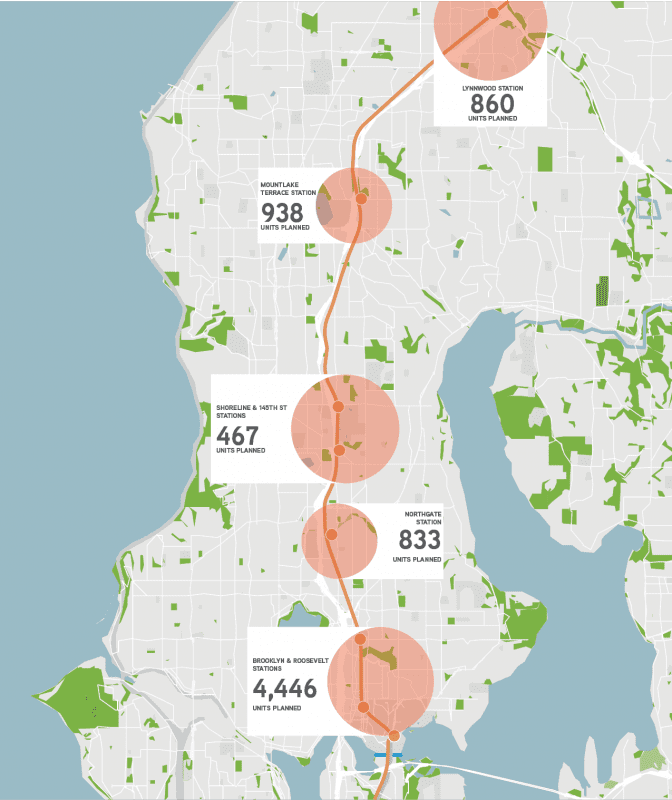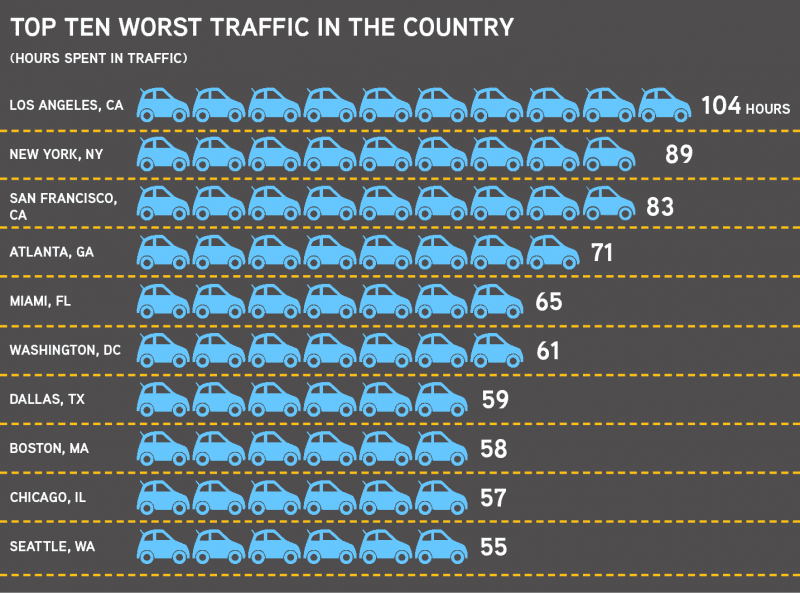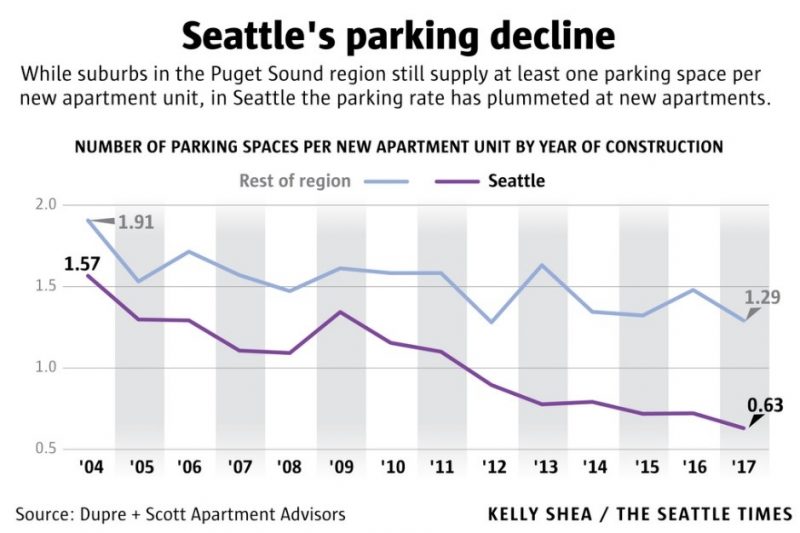It seems like Seattleites love to grumble about three things: weather, traffic, and parking. City planners and developers can’t do much about the rainy weather – try as they might – but nearly everyone involved in the real estate market in Seattle must take into consideration transportation issues.
The city is adding more than 1,000 people a week over the past year – it’s no wonder that the roads and buses can’t keep up! But if you’re interested in building, owning, or investing in Seattle’s apartment market, you can’t ignore the city’s most pressing question right now:
How can you get from A to B in Seattle?
There are four key ways that traffic and transit in Seattle are impacting the apartment market:
- Development is Following Transit
- Congestion Keeps Suburban Residents Close
- Seattleites Stay Close Inside the Core, Too
- Parking is a Popular – but Expensive – But Expensive to Build
1. Development is Following Transit
The concept of transit-oriented development isn’t a new one, but it’s relatively new to Seattle. For decades, the city was a transit desert compared to big urban centers like Chicago or Washington D.C. Seattle relied on buses, and developers weren’t building 200-unit buildings on Capitol Hill when a new bus stop sprang up!
Yet, light-rail is changing that norm. Light-rail hosts thousands of riders a day, and as it expands, development is exploding around each proposed station. The U District, Roosevelt, Northgate, and Lynnwood have more than 6,200 units planned in the next four years, and most of the units are clustered near the new light-rail stations:

If you’re looking for the next up-and-coming neighborhood to invest in, simply follow the tracks. I predict that we’ll see even more development around the Northgate, Shoreline and Lynnwood light-rail stops in the next 5 to 10 years.
2. Congestion Keeps Suburban Residents Close
Many watchers of the Seattle market noted the growing exodus of renters into outer-ring markets, all seeking one goal: affordability. Yet while rents continue to rise in most suburban submarkets, it’s clear that Seattle expats are only willing to move so far outside the city’s core. They’re worried about affordability, sure, but commute times can be just as stressful.
The desire for proximity – driven in part by concerns over long commutes – compresses vacancy rates in close-in markets like Burien (-1.26% y-o-y) while vacancy in further-out markets has been slower to decrease (Kent, -0.11% y-o-y), and in some cases it’s going up (Everett, +.07% y-o-y).
Seattleites keep seeking sunnier skies and lower rents in the larger Puget Sound area, but if they still work in the urban core, prohibitive morning commutes will keep them from moving too far away. I anticipate that this will remain the case until our suburban transit system becomes more extensive and reliable. In the meantime, markets like Renton and Shoreline will continue to reap the geographic rewards in the case of outsized rental rate growth!
3. Seattleites Stay Close Inside the Core, Too
Long commute times are just as pressing of a concern within the city limits, too. Most neighborhoods are experiencing development, but the neighborhoods closest to major employment hubs are seeing the most inventory growth.
South Lake Union is set to receive more than 9,800 units in the next five years, First Hill is set to receive more than 5,000 new units, and Downtown itself could absorb more than 9,700 units. There are more than 1,400 units planned in the Westlake corridor near Facebook, and the edge of Interbay, near Expedia’s future campus, could add more than 800 units in the next five years.
While zoning plays a crucial role in which neighborhoods receive the most multifamily development, real estate is still about location, location, location. Why would new Amazon employees move into apartments requiring a 45-minute morning commute when a new 80-unit complex is just down the street from work?

Seattle residents spent an average of 55 hours per person in traffic last year, making our city the 10th worst city for traffic in the U.S. More people are choosing to travel via transit, but anyone who has tried to get past Mercer St. in South Lake Union can tell you that buses and cars are still struggling to share the road.
4. Parking is a Popular – and Lucrative – But Expensive to Build
Longtime residents of Seattle were used to easy parking for so long. You could find a free spot in Wallingford before a movie or even in Capitol Hill before a show without worrying too much. Today, however, parking is a hot commodity.
New apartment buildings are offering fewer parking spots than they used to, yet the spots are costing residents more as demand increases. The Seattle Times recently reported that developers are including 60 percent fewer parking spaces per unit than they did ten years ago.


Until Seattle transit improves (we all have our fingers crossed), Seattle residents will predominantly rely on cars, and apartment buildings will include parking spaces as an attractive feature.
Plan for the Future
Investors will need to take transit and traffic into consideration when deciding where to invest. Seattle’s urban core is reaping the advantages of bad traffic because residents want to live near their work, but the subsequent rising rents are pushing people out of the city at the same time. Transit lines are expanding into the outer-ring of Seattle as well, bringing development along with it. As an investor, do you want to stay where the market is hot, or break new ground outside the city limits? There are risks to consider, but only one thing you can count on in the foreseeable future: traffic isn’t going to get any easier for awhile in our lovely emerald city.

